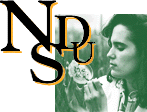 |
|
|
|
A Key to the superfamilies of the Lepidoptera
Family Papilionidae
Papilionidae-- Swallowtails and Parnassians have forewing venation quadrifid, a single anal vein on the hindwings and six walking legs, the foreleg with a tibial epiphysis (found in most moths and also the Hesperiidae). There are about 600 species worldwide, 35 species in North America, 9 have been recorded from North Dakota. Of the 3 subfamilies, Papilioninae, Parnassinae, and Baroninae, only the first listed occurs in ND.
Family Pieridae
Pieridae-- Sulphurs and Whites have bifid tarsal claws, two anal veins and six walking legs. Most are yellow, orange or white in color. There are about 1,000 species worldwide, 70 in North America and 14 in North Dakota. Of the four subfamilies: Coliadinae, Pierinae, Pseudopontinae and Dismorphinae, the first two occur in ND. Note that the Dismorphinae possess quadrifid forewing venation as found in the Papilionidae.
Family Lycaenidae
Lycaenidae-- Gossamer-winged butterflies have eyes emarginate to the antennae, the dorsal wing surface is often lustrous. Males have four walking legs, females six. More than 6,000 species worldwide and 178 in North America. There are five subfamilies: Riodininae, Poritiinae, Miletinae, Curetinae, and Lycaeninae. Of the 29 Lycaenidae in ND, the Riodininae and Miletinae are each represented by a single species, the remaining being Lycaeninae. One tribe of the Lycaeninae, the Polyommatini (blues) do have bifid tarsal claws similar to the Pieridae.
Family Nymphalidae
Nymphalidae-- brush-footed butterflies have the ventral surface of the antennae tricarinate, virtually all species with only four walking legs. At least 6,000 species worldwide, 200 in North America and 52 in ND. There are 10 subfamilies, those not occurring in ND are marked with an asterisk (*): Libytheinae, Heliconiinae, Nymphalinae, Limenitinae, Charaxinae*, Apaturinae, Morphinae*, Satyrinae, Calinaginae* and Danainae. The first listed subfamily with only 12 species worldwide (1 strays into ND), is characterized by possessing six walking legs in females.
| ||||||||||||||||||||||||||||
|
Last updated:
06/20/07
|